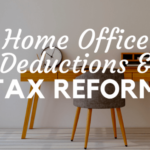Crosstown Commercial / May 3, 2021
The State of MN Retail in the Era of COVID
We all know that the state of retail has suffered over the recent decade. With the rise of online sales through eCommerce businesses, customers have started to rely on the flexibility and convenience of online shopping and the broader available assortment. Though the most significant disadvantage with online shopping is the lack of interaction between customer and sales expert or even customer and product, eCommerce businesses have made it easier to purchase, return, and exchange, thus eliminating most of the objections that typical consumers would have.
But even despite the conveniences of online shopping, customers still want the opportunity to choose how they shop. Some shoppers buy exclusively online, but others still want the ability to head to a brick-and-mortar location when they want to. Yet enter the era of COVID-19, and it seems things were a bit wheels-off for the typical brick-and-mortar business. COVID restrictions created an unwelcome shock to customers and retailers alike, posing problems that never could have been anticipated even two years ago.
With the pandemic came a rise in sales for businesses that had mastered the art of online transactions. Those brick-and-mortar locations that hadn’t taken to the internet or offered only a meager online assortment floundered. And this challenge existed for far more than just clothing, sporting goods, and other retailers that weren’t deemed essential for continuing in-person operations.
Though online sales are still only a fraction of overall retail sales, that delta shrunk noticeably with the entrance of the coronavirus pandemic. In fact, according to Digital Commerce 360, consumers spent $861.12 billion online with U.S. merchants in 2020, up an incredible 44.0% year over year. This growth is higher than what the U.S. has seen over the last twenty years, and it is almost three times what it was back in 2019.
What does the growth of pandemic-laden online retail sales mean for the commercial real estate business?
In the past, when a retailer needed to shut down, a new concept took over the real estate space. Landlords didn’t have much time in between to prepare for the new tenant, especially in high-traffic shopping areas. When a retailer shuts down, it is commonplace for passersby to see boarded-up doors and windows and not think anything of it. In fact, seeing these businesses shut down has become part of our new normal.
Large retailers and small retailers alike felt the brunt of the pandemic. Whether shuttered for days, weeks, or months, the COVID restrictions wreaked havoc on revenue. Add in the surge in employment rates and a drop in overall spend for those impacted by job loss, and those who weren’t shut down due to restrictions often found themselves shutting down because they couldn’t afford to continue operations. Those businesses who persevered, however, were those that figured out how to maximize the online space.
With more and more businesses finding a way to be profitable online, and more and more consumers gaining comfort in online shopping, it begs the question of what will happen to these large sections of real estate that have no backup plan for a new tenant. Adding to the complication is that many of these anchor stores were located on properties owned by different legal entities, making legal proceedings lengthier and costlier and slowing down the opportunity to turn that space over to a new tenant.
On the bright side, some retailers have found ways to use vacant spaces as fulfillment centers, making it easier to get products in the hands of eager consumers. Though companies like Amazon have incurred capital expenditures for their distribution centers, it seems that COVID-19 has made it easier to obtain these spaces and at a lower cost.
So what does it all mean for real estate investors?
As always, some will win, and others will be less fortunate. Though this new normal isn’t what we anticipated, nor is it something that we ever wanted, consumers and businesses alike will work directly and indirectly to determine a shopping experience that will work for everyone. Investors and those in the commercial real estate business need to be agile and ready to pay attention to the changing needs, making the necessary adjustments along the way.



























